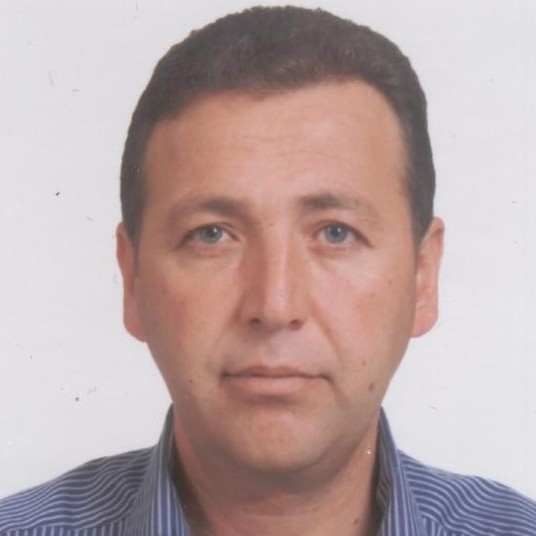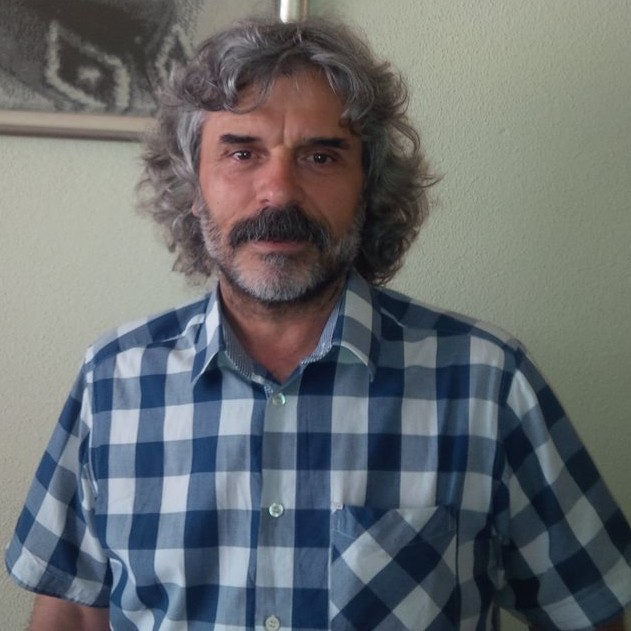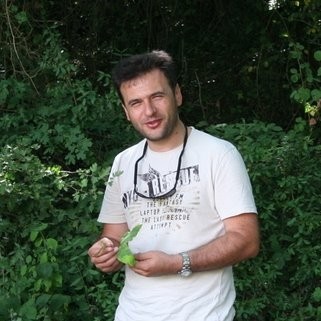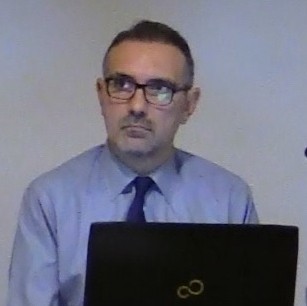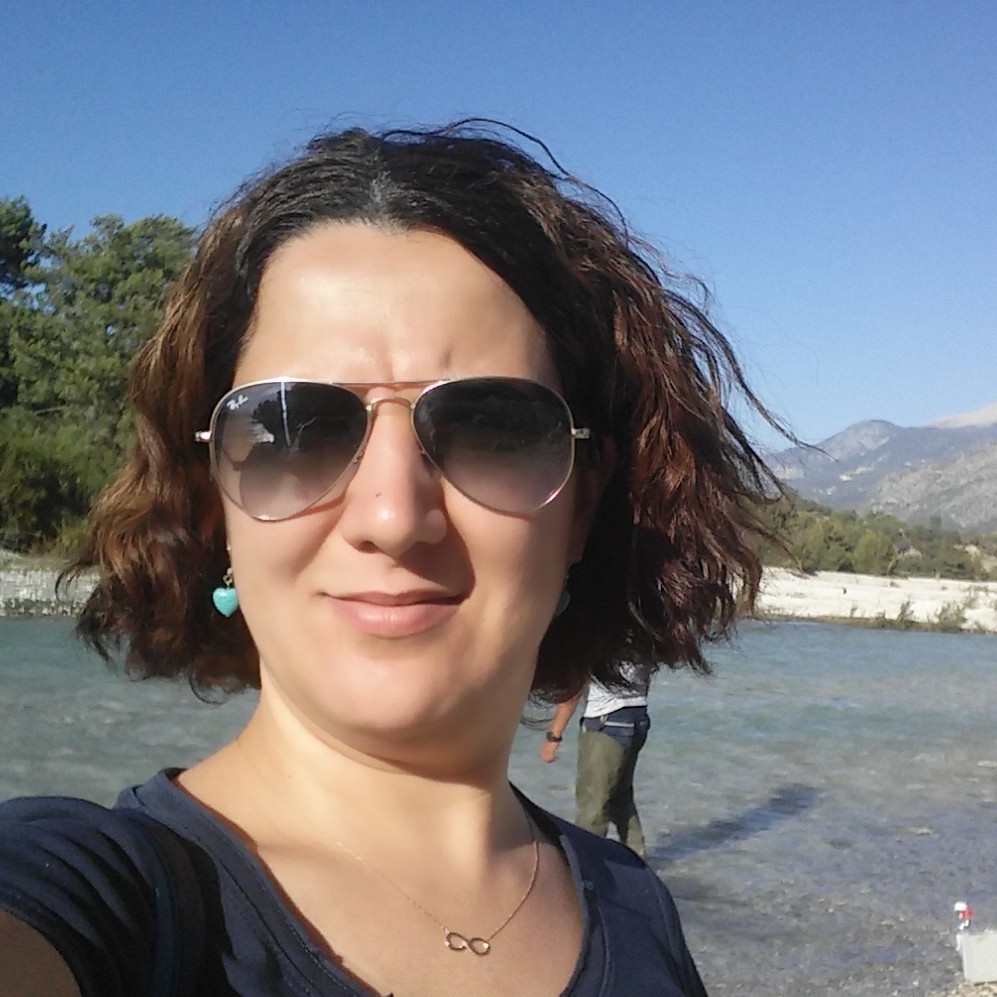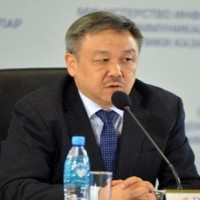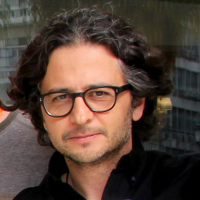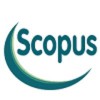Research Article
Review
Aim & Scope
Trakya University Journal of Natural Sciences (TUJNS) publishes studies with strong scientific content in the fields of Biology, Biotechnology and Basic Medical Sciences in order to make articles available to a wide range of scientists at the international level. The journal provides researchers with a fast and fair environment to submit, improve and publish their studies. The journal is not only free of any kind of submission and publication charge but also it allows free online access to published articles.
Trakya University Journal of Natural Sciences (TUJNS) publishes experimental and theoretical contents in the form of research articles, systematical reviews and meta-analyses, reviews, short communications, technical notes, letters to the editor and book introductions in fields of Life Sciences. Questionnaire studies are not accepted for evaluation in the journal. The main feature of publishing policy is the contribution to science. Studies for which reviewers reported no scientific contribution decision are not published.
Author Guidelines
PEER REVIEW PROCESS
All submissions uploaded to the manuscript evaluation system will be investigated in weekly meetings by the Editorial Board for the control of their scientific contents. Individual views of board members are received and the final decision on the submission is given by the Editor in chief. Submissions with scientific contents are assigned a section editor for further processes. Section editors send a manuscript as soon as possible to 2 reviewers with a PhD degree at the least for a review request. The reviewers are asked to inform the section editors in 7 days to inform the section editors about their decisions (accept or refuse to review) on the evaluation of the manuscripts. Section editors assign new reviewers for those who refuse the review request or who do not respond in 7 days. Reviewers accepting the manuscripts for evaluation complete their review tasks in 21 days and send their review reports to section editors with which they reject the manuscript or ask for a resubmission after revision. TUJNS applies a double-blind review process. Section editors make a decision considering the reviewers’ reports and inform the Editor-in-Chief. Then Editor-in-Chief gives the final decision about the manuscript and informs the author(s) about the decision.
The Editor-in-Chief is not permitted to submit research articles and reviews to TUJNS and thus cannot be considered for publication. Conversely, members of the Editorial Board have the opportunity to submit their manuscripts to the journal. However, they do not participate in the editorial decision-making process regarding their manuscripts to mitigate potential bias.
Invited reviews, editorials and letters to editors may be accepted by the editor-in-chief without peer review after the editorial board review.
ETHICAL GUIDELINES
AUTHORSHIP CRITERIA
CONFLICT OF INTEREST
Authors are obliged to disclose in the TUJNS conflict of interest disclosure all relations and activities that may create bias with their work in the manuscript they submit to TUJNS.
Referees invited to evaluate a manuscript in TUJNS should decline the invitation to referee in case of any conflict of interest regarding the manuscript or authors. It is recommended that the reviewer contact and consult with the Editor in case of doubts about situations that may lead to a conflict of interest.
Journal employees can publish manuscripts in TUJNS. However, a limited number of manuscripts can be accepted in an issue. In studies accepted for evaluation, manuscript authors who are journal employees are excluded from all processes, and this is clearly stated at the end of the article in the conflict of interest section.
DATA SHARING POLICY
Selected statements publish at the end of the manuscript under the“Data Sharing” header.
The author(s) should clearly state the repository's name, URL, and the repository's conditions for using the data.
• Data available on reasonable requestThe author(s) should be given detailed information about the special conditions regarding the use of the requested data.
• Data obtained by third parties can be provided on requestIt should be stated by which institution or organization the data is provided. It should be clearly stated what the data is, and detailed information should be given about which requests can be made on-demand and the special conditions, if any, related to its use.
• All data are available within the studyIt is sufficient to write the above statement regarding this situation.
• The data set has not been createdIn cases where a data set is not created for the study, it is sufficient to write the statement "Not applicable".
• No dataIn cases where data is not collected for the study, it is sufficient to write the statement "Not applicable".
• Data will not be sharedIt is sufficient to write the above statement regarding this situation.
HUMAN AND ANIMAL RIGHTS STATEMENTS
Trakya University Journal of Natural Sciences considers preprint publications submitted and discussed in a preprint server (e.g. arXiv, bioRxiv, chemRxiv, medRxiv).
At the time of submission of such a preprint publication, the author must provide the journal with the DOI number and the record of their article on the preprint server. For preprints to be cited in the text and listed in the references section, the DOI number or preprint link must be included. Otherwise, it will not be accepted as a citation.
It is the responsibility of the authors to update the preprint archived in the repository of the article published in Trakya University Journal of Natural Sciences and to link it to the published version of the article.
Trakya University Journal of Natural Sciences adheres to WAME recommendations regarding the use of ChatGPT and Chatbots in publications to be evaluated:
- Chatbots cannot be authors,
- Authors should be transparent when chatbots are used and provide information about how they are used,
- Authors are responsible for the work performed by a chatbot in their articles (including the accuracy of what is presented and the absence of plagiarism) and for the proper attribution of all sources (including materials generated by the chatbot).
Trakya University Journal of Natural Sciences
(Trakya Univ J Nat Sci)
Trakya University Journal of Natural Sciences is published twice a year in April and in October and includes theoretical and experimental articles in the fields of Biology, Biotechnology and Basic Medical Sciences. Original studies, research notes, reviews, technical notes, letters to the Editor and book reviews can be published in the journal. The publishing language for all articles in the journal is English. On the other hand, authors are required to provide a Turkish abstract also. The Turkish version of the abstract will be supplied by the journal for foreign authors. Abstracts should include an introduction, material and methods, results and discussion sections in summary. The authors should pay attention to research and publication ethics Committee on Publication Ethics (COPE) in preparation of their manuscripts before submission by considering national and international valid ethics. An approval of Ethics and Animal Welfare Committee is mandatory for submissions based on experimental animals and this approval should be provided during the submission of the manuscripts. Articles that have not been published elsewhere previously and whose copyright has not been given anywhere else should be submitted. All responsibilities related to published articles in the Trakya University Journal of Natural Sciences belong to the authors.
Submitting articles
Articles should be submitted on the web through https://dergipark.org.tr/trkjnat and all submissions should be performed online.
Authors, who are already a member of the DergiPark system, can enter in the login section using their “user name” and “password“ to submit their articles.
Authors entering the DergiPark system for the first time to submit an article will enter in the “REGISTER” section to submit their articles.
Article preparation rules
Articles should be submitted to the Journal using MS Word preparing 12 points Times New Roman font and 1.5 raw spacing. Author names and contact info must be on the first page, the article must continue on the second page without author names and contact info. The whole article should have been numbered with a line number restarting each page. The author's name must not be specified any academic titles. If studies are supported by a foundation, this support should have been written in the acknowledgement section.
Articles should be arranged as below:
Authors: The name(s) of the author(s) should not be abbreviated and must be written under the title one by one, with surnames in capital letters. Address(es) should be written in full. Corresponding authors in multiple-authored submissions should be indicated, and the address and e-mail of the corresponding author should be written just under the author(s) list. No other information about the manuscript should be included in this page. The main manuscript text should start with the following new page and should not include any author-contact information.
Title: Should be short and explanatory and written in capital letters and centered.
Abstract and keywords: Turkish and English abstracts should not exceed 250 words. “Keywords” should be written under the abstract in small letters and all keywords should be written using a comma after all. Keywords should not be replica of the title words if it is not obligatory. The abstract should begin “Abstract” word from the left side of the page. The main and subheaders (if present) should not be numbered.
Introduction: The aim of the submitted and history of the previous studies should be indicated in this section. SI (Systeme International) system and abbreviation should be used in the article. Other abbreviations- should be explained once in their first appearance in the text. No “.” sign should be used after abbreviations except those used at the end of a sentence (…the determined distance is 45 m. Therefore, …).
Material and Method: If the submitted study is experimental, the methods of the experiments should be given in detail. The method(s) used in the article should be descriptive for others to repeat. If a widely known experimental method is used, the method does not need to be explained in detail. In this situation, indicating only the name of the experimental method or citing the study who used the method for the first time will be enough.
Results: Obtained results should be given in this section without any comment. Results can be explained with tables, figures or graphics, if necessary.
Discussion: Results must be discussed, but unnecessary duplications should be avoided. In this section, rather than giving literature data, authors should focus on their results considering similarities and differences with and between previously conducted researches and should discuss possible reasons of similarities and differences. The contribution to science and the importance of the obtained results should also be mentioned as much as possible in this section.
Acknowledgements: Should be as short as possible. Thanks are usually made to institutions or individuals who support the study or to experts who reviewed the article before submitting to the journal. The acknowledgement section should be given before the references section in a separate header.
References: Unpublished information should not be given as a reference (examples of unpublished references: articles in preparation or submitted somewhere, unpublished data or observations, data obtained based on interviews with individuals, reports, lecture notes, seminars, etc.). However, thesis completed and signed by a jury and articles with DOI numbers given can be used as reference. References should be given at the end of the text, sorted alphabetically by author’s surname and should be given with numbering.
Reference style:
You can download the Endnote style of TUJNS from here.
Or you can follow the instruction below.
Articles: Surname of the author, the first letter of author’s first name. publication year. article title, the name of the journal, volume, issue, page numbers. Journal name is written in italics.
Example:
Articles with single author
Surname, N. Year. Article title (First letter of all words small). Whole name of journal, Volume (Issue): page range.
Aybeke, M. 2016. The detection of appropriate organic fertilizer and mycorrhizal method enhancing salt stress tolerance in rice (Oryza sativa L.) under field conditions. Trakya University Journal of Natural Sciences, 17(1): 17-27.
Articles with two or more authors
Surname1, N1. & Surname2, N2. Year. Article title (First letter of all words small). Whole name of journal, Volume (Issue): page range.
Dursun, A. & Fent, M. 2016. Contributions to The Cicadomorpha and Fulgoromorpha (Hemiptera) fauna of Turkish Thrace region. Trakya University Journal of Natural Sciences, 17(2): 123-128.
Surname1, N1., Surname2, N2. & Surname3, N. Year. Article title (First letter of words small). Whole name of journal, Volume (Issue): page range.
Becenen, N., Uluçam, G. & Altun, Ö. 2017. Synthesis and antimicrobial activity of iron cyclohexanedicarboxylic acid and examination of pH effect on extraction in water and organic phases. Trakya University Journal of Natural Sciences, 18(1): 1-7.
Preprints: Surname of the author, the first letter of author's first name. publication year. article title, the name of the repository [Preprint], (cited: 12.08.2017). DOI number
Example:
Augustine, D., Rao, R.S., Gns, H.S., Anbu, J. & Saraswathy, G.R. 2022. Anticancer Potential of Eudrilus Eugeniae Coelomic Fluid Protein on SCC-9 Cells-In Vitro Gene Expression entwined with Cutting-Edge In-Silico Strategy, Research Square. [Preprint] (cited: 02.01.2024). https://doi.org/10.21203/rs.3.rs-439242/v1
Book: Surname of author, first letter of author’s first name, Year. Book title (name of translator or book editor if present), volume, edition number, press, city, page number.
Example:
Surname, N. Year. Book Title (First letter of words small and italic), volume, edition number, press, city, page number.
Czechowski, W., Radchenko, A., Czechowska, W. & Vepsäläinen, K. 2012. The ants of Poland with reference to the myrmecofauna of Europe. Museum and Institute of Zoology PAS, Warsaw, 496 pp.
Book Section: Surname of author, first letter of the author’s first name, Year. Section name, page range. In: (Editor(s) of Book, Book title, press, city, page number).
Example:
Surname, N. Year. Section name, page range. In: Editor of Book, Book title (First letter of words small and italic), press, city, page number.
Jansson, A. 1995. Family Corixidae Leach, 1815—The water boatmen. pp. 26-56. In: Aukema, B. & Rieger, C.H. (eds). Catalogue of the Heteroptera of the Palaearctic Region. Vol. 1. Enicocephalomorpha, Dipsocoromorpha, Nepomorpha, Gerromorphaand Leptopodomorpha. The Netherlands Entomological Society, Amsterdam, xxvi + 222 pp.
Congress, Symposium: Surname, N. Year. Presentation title (first letters of all words small), page range. Name of Congress/Symposium, Date (day range and month), place.
Example:
Bracko, G., Kiran, K., & Karaman, C. 2015. The ant fauna of Greek Thrace, 33-34. Paper presented at the 6th Central European Workshop of Myrmecology, 24-27 July, Debrecen-Hungary.
Internet: If any information is taken from an internet source (articles published in journals and taken from internet excluded), internet address should be written in full in references section and access date should be indicated.
Surname, N. Year. Name of study (First letter of words small). http://www...... (Date accessed: 12.08.2009).
Hatch, S. 2001. Student sperception of online education. Multimedia CBT Systems. http://www.scu.edu.au/schools/sawd/moconf/papers2001/hatch.pdf (Date accessed: 12.08.2009).
References within the text should not be numbered and indicated as in the following examples.
Examples:
... atmospheric pollution is causing by x matter (Landen 2002). If an article has two authors, it should be indicated in the text as (Landen & Bruce 2002) or ... according to Landen & Bruce (2002) .... If there are three or more authors, references should be indicated as (Landen et al. 2002) or according to Landen et al. 2002 ...
Graphics and tables: All photos, pictures, drawings and graphics except tables should be indicated as Figures. Pictures, figures and graphics should be clear and ready to print with the offset technique. The places of all tables and figures should be indicated in the text. All tables and figures should be numbered within the text respectively (Table 1, Fig. 1, Figs 3, 4). Figure numbers and legends are written below the figures, table numbers and legends are written above the tables.
All figures (all pictures, drawings and graphics except table) should also be uploaded to the system separately with 300dpi resolution at least as .tif file using the figure numbers in the files name.
Submitted articles are subjected to prior review by the Editorial Board. Editorial Board has the right to reject the articles which are considered of low quality for publish or those which are insufficiently prepared according to the author guidelines. The articles accepted for consideration for evaluation will be sent to two different referees. Editorial Board decides to accept or reject the submissions for publication by taking into account the reports of referees.
COPYRIGHT
The authors retain the copyright and full publishing rights to the article without any restriction.
LICENSE
All articles published in TUJNS is on the “Open Access” terms. All publications are published under the Creative Commons Attribution 4.0 Generic Licence (CC BY 4.0) (http://creativecommons.org/licenses/by/4.0/legalcode) which allows to copy and distribute the material in any medium or format and transform and build upon the material, including for any purpose (including commercial) without further permission or fees being required.
EXPLOITATION ENQUIRY AND COMPLAINTS
All kinds of exploitation doubts and complaints about manuscripts, either published or in the publication process, are evaluated by the Editorial Board. The Editorial Board strictly follows the directives of COPE (Committee on Publication Ethics) during the evaluations. An ombudsman who has no connection with the parts in any stage of the complaint is appointed and a decision is made. Complaints can be sent to the editor in chief by sending an e-mail to tujns@trakya.edu.tr.
POST-PUBLICATION CHANGE AND WITHDRAWAL OF A MANUSCRIPT
Changes in author ordering, removal or addition of a new author in and withdrawal of a published manuscript can be realized by sending an application to tujns@trakya.edu.tr. The application e-mail should include the reason of the requested change with the evidences. The reasons and the evidence are discussed and finalized by the Editorial Board. Further submissions of authors of a formerly accepted manuscript undergoing a change process are automatically sent back to the authors until the final decision of the manuscript in process.
ADVERTISING
Advertising applications sent to tujns@trakya.edu.tr will be evaluated by the journal owner.
Ethical Principles and Publication Policy
Price Policy
All articles published in TUJNS is on the “Open Access” terms. All publications are published under the Creative Commons Attribution 4.0 Generic Licence (CC BY 4.0) (http://creativecommons.org/licenses/by/4.0/legalcode) which allows to copy and distribute the material in any medium or format and transform and build upon the material, including for any purpose (including commercial) without further permission or fees being required.
Trakya University Journal of Natural Sciences (TUJNS) is open access and without requires any author fees or charges.
Indexes
Citation Indexes
Other Indexes
Journal Boards
OWNER OF JOURNAL
EDITOR-IN-CHIEF

ASSOCIATE EDITORS
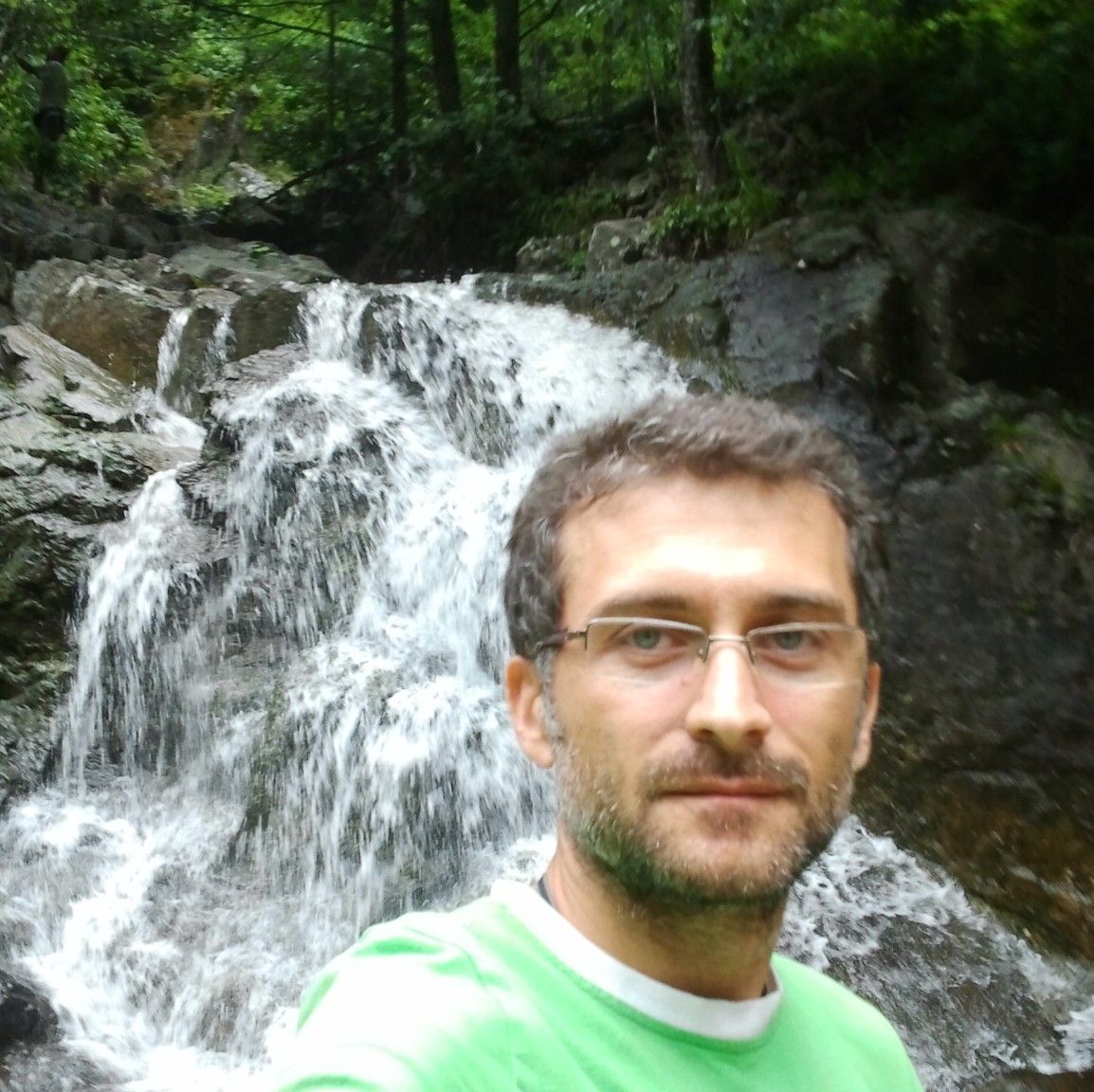

EDITORIAL BOARD









